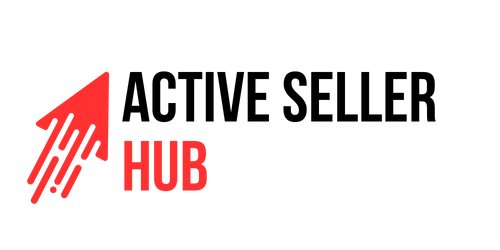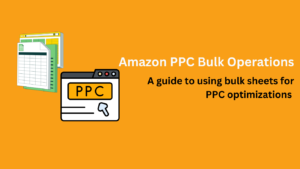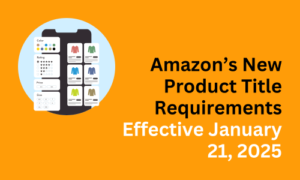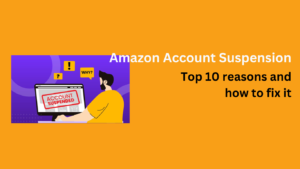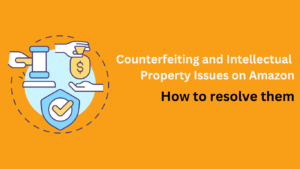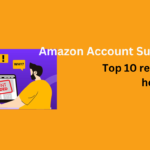Amazon is the largest online marketplace, offering unparalleled opportunities for brands to reach millions of customers. However, it’s also a challenging ecosystem where counterfeiting, unauthorized sellers, and listing hijacking can undermine your business. As an agency of experts, including an ex-Amazonian, Active Seller Hub specializes in helping brands with Amazon brand protection to safeguard their business. This article dives into essential strategies to protect your brand on Amazon and ensure your growth.
Why Amazon Brand Protection Matters
Amazon’s marketplace thrives on trust, and customer trust is tied to the authenticity of products. Without proper brand protection strategies, businesses risk losing sales to counterfeiters, damaging their reputation, and incurring compliance penalties. Whether you’re selling supplements, electronics, or handmade goods, having robust measures in place is vital for long-term success.
Key Threats to Brands on Amazon
To effectively protect your brand on Amazon, you must first understand the key threats:
- Counterfeit Products
Fake products bearing your brand name can lead to customer dissatisfaction and poor reviews. Implementing Amazon counterfeit prevention strategies is critical. - Unauthorized Sellers
Sellers listing your products without authorization often undercut pricing, violate MAP agreements, and devalue your brand. - Listing Hijacking
Competitors or bad actors might hijack your product listings, altering details to redirect sales or misrepresent your product. - Intellectual Property (IP) Violations
Protecting your trademarks, logos, and copyrighted materials is essential for Amazon intellectual property protection. - Review Manipulation
Fake or manipulated reviews harm credibility and affect your Amazon seller account performance.
Proven Strategies for Amazon Brand Protection
1. Enroll in Amazon Brand Registry
The Amazon Brand Registry program is the cornerstone of brand protection. It offers tools like Proactive Brand Protections, which block suspected infringing listings automatically. Additionally, it provides access to features like A+ Content and branded storefronts, ensuring your product listings reflect your brand’s identity.
- Eligibility Requirements:
- A registered trademark.
- Proof of use of the trademark on your products or packaging.
2. Leverage Amazon Transparency Codes
Amazon’s Transparency Program adds unique barcodes to your products. These barcodes authenticate your products and ensure Amazon counterfeit prevention, preventing bad actors from infiltrating your listings.
3. Monitor and Report Violations
Use tools like Amazon Report a Violation (ARAV) to flag unauthorized sellers, counterfeiters, and IP violations. Regular monitoring of your product listings is essential for quick action.
How to Address Unauthorized Sellers
Identify Violators
Use monitoring tools to track your product listings and identify unauthorized sellers on Amazon.Cease-and-Desist Notices
Send formal letters to violators to stop selling your products. In cases of repeated violations, escalate through legal channels.Enforce MAP Policies
Regular enforcement of Minimum Advertised Price (MAP) agreements discourages sellers from undercutting your pricing.
Preventing Listing Hijacking on Amazon
- Use GS1 Barcodes:
Genuine GS1 barcodes ensure authenticity and make it difficult for bad actors to duplicate your listings. - Secure Your Seller Account:
Protect your Amazon seller account with multi-factor authentication (MFA) to safeguard sensitive information and prevent unauthorized access. - Regular Listing Audits:
Check listings for unauthorized changes to product descriptions, pricing, or images.
Handling Counterfeiters on Amazon
Proactive Measures
- Enroll in Amazon Project Zero to take control of counterfeit removal. This program empowers you to act without waiting for Amazon’s review process.
Reactive Measures
- Use Amazon Report a Violation (ARAV) to report counterfeit products promptly.
- Submit trademark proof and counterfeit evidence for faster resolution.
Technology and Tools for Brand Protection
Automated Monitoring
Third-party tools like Smart Protection help automate listing surveillance, identifying unauthorized sellers and counterfeit activity in real-time.
Data Insights
Use analytics to track pricing trends, reviews, and seller activities. This data can highlight potential threats to your brand early.
The Hidden Costs of Ignoring Brand Protection
Failing to implement brand protection strategies on Amazon can have hidden costs beyond lost sales. Counterfeit products often result in negative reviews, damaging your product ratings and overall brand perception. Poor ratings can affect your organic search ranking on Amazon, reducing visibility and sales over time. Additionally, dealing with counterfeiters and unauthorized sellers is resource-intensive, diverting attention from growth-oriented activities like marketing and product development.
To avoid these pitfalls, allocate resources proactively for monitoring and enforcement. Regular audits and quick action against threats are investments that pay off in customer trust and revenue stability.
Leveraging Enhanced Brand Content for Brand Protection
Amazon’s Enhanced Brand Content (EBC) and A+ Content aren’t just tools for boosting conversion rates; they also help solidify your brand identity. Using these features to create detailed product descriptions, professional imagery, and brand stories helps customers differentiate your authentic products from counterfeits. EBC makes it harder for bad actors to replicate your listings effectively, offering an additional layer of protection.
- Tip: Regularly update your EBC to include unique product details, certifications, or awards that counterfeiters cannot replicate.
Building a Long-Term Brand Protection Plan
To ensure sustainable success, build a long-term brand protection plan that evolves with your business. Here’s a roadmap to get started:
- Annual Review of IP Assets: Ensure your trademarks, copyrights, and other intellectual property are up to date.
- Automated Monitoring Systems: Invest in tools that track unauthorized sellers, counterfeiters, and listing changes in real-time.
- Regular Staff Training: Educate your team about the latest threats and how to spot them quickly.
- Partnerships: Work with third-party experts to access additional tools and insights that strengthen your defenses.
The Role of Data in Amazon Brand Protection
Data is a powerful tool for spotting threats and making informed decisions. Regularly analyze metrics like:
- Seller Performance: Identify trends in unauthorized seller activity.
- Review Patterns: Look for anomalies in reviews that could indicate counterfeit sales.
- Pricing Fluctuations: Sudden price drops might signal unauthorized sellers or listing hijackers.
Using data strategically helps you act swiftly, preventing minor issues from escalating.
Educating Customers to Recognize Authentic Products
Empowering customers to identify genuine products is a proactive way to combat counterfeits. Use your Amazon listings and brand website to highlight unique features, such as special packaging, authenticity seals, or QR codes linked to product verification tools. Include clear instructions on how customers can report counterfeit products directly to Amazon or your support team.
Protecting Your Brand During Seasonal Sales and Promotions
Peak shopping seasons like Black Friday or Prime Day attract more counterfeiters and unauthorized sellers. During these periods, increase monitoring efforts to ensure your listings remain secure. Double-check inventory levels, pricing, and product details to prevent listing errors or hijacking. Proactively inform your customers about limited-time offers to drive sales through your official listings, reducing the appeal of counterfeit alternatives.
Why Invest in Brand Protection on Amazon?
Investing in Amazon brand protection is critical for preserving your business’s reputation and profitability. Counterfeiters and unauthorized sellers erode your market share, while damaged customer trust affects sales. By proactively adopting brand protection strategies, you ensure long-term growth and stability.
Partner With Experts for Amazon Brand Protection
By implementing these Amazon brand protection strategies, you’ll not only shield your brand from threats but also set the foundation for sustainable growth. Take action today to protect your brand on Amazon and achieve long-term success.
